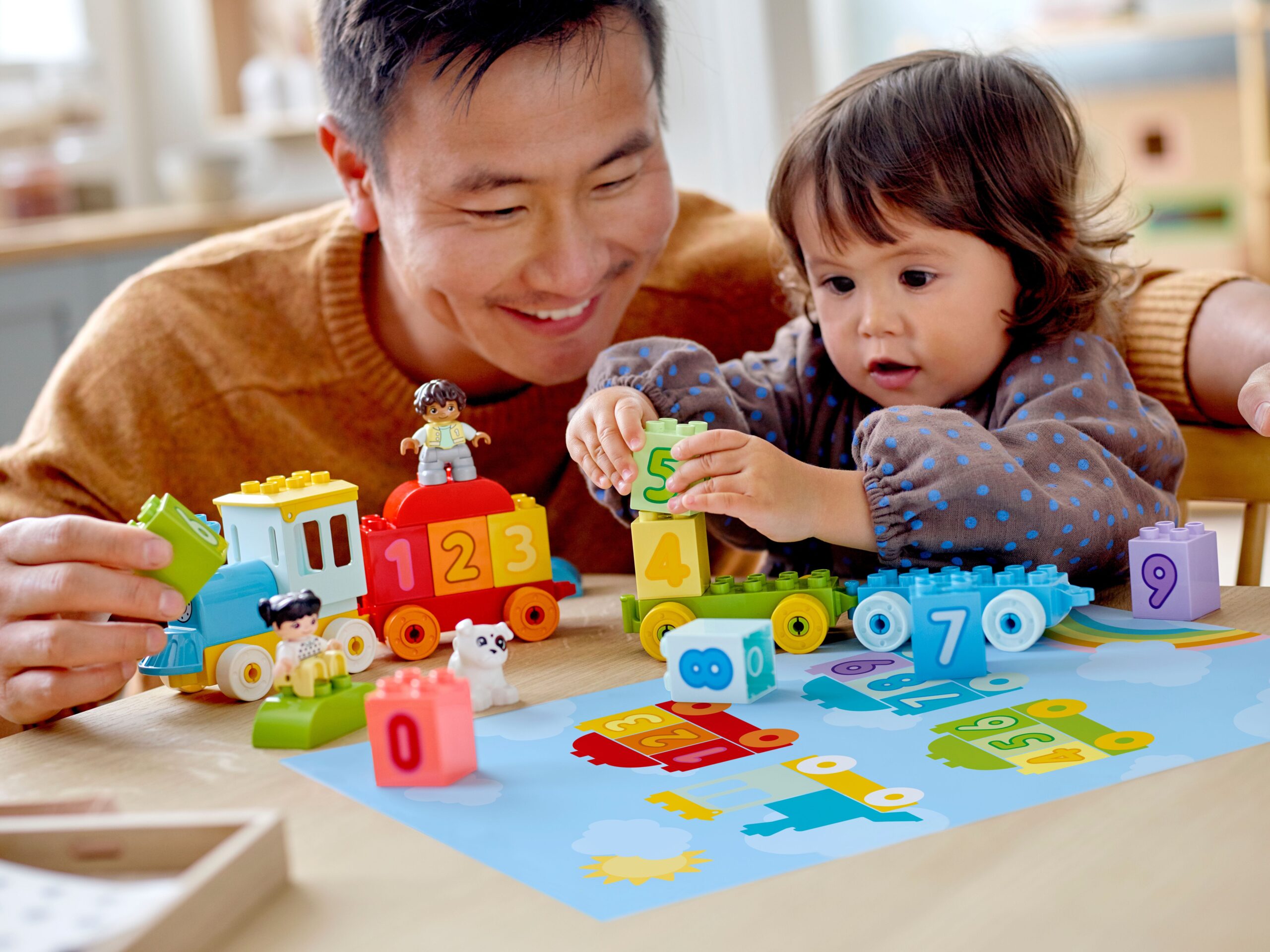At 12 months, your baby is entering an incredible stage of growth. They’re moving, exploring, and soaking up the world around them like little sponges. This is a perfect time to introduce fun, age-appropriate activities that help with development—while keeping play calm, intentional, and connected.
At PeacePebble, we believe in gentle parenting, mindful play, and simple routines. Below are the best activities for 1-year-olds that support early learning, build strong parent-child bonds, and create peaceful moments every day. These ideas are not just fun—they’re rooted in connection, learning, and presence.
1.Soft Sensory Bins

Create a safe sensory bin using everyday soft items: cotton balls, soft silicone spatulas, baby washcloths, textured fabric squares, or large felt shapes. You can also add a few wooden rings or natural loofahs for contrast.
Place your baby on a mat and let them explore with their hands, mouths, and fingers.
Why it matters:
Sensory bins stimulate your child’s tactile senses and help build neural pathways. At this age, babies explore the world through touch and taste, and this kind of play helps improve their fine motor skills, concentration, and even emotional regulation.
Tip: Always supervise sensory play and keep items large enough to avoid choking risks.
2.Peek-a-Boo with a Twist
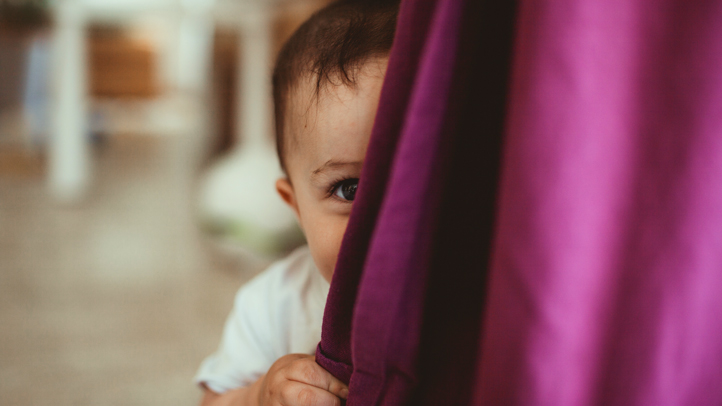
While classic peek-a-boo is always a hit, try variations to keep your baby engaged.
- Hide behind a curtain and slowly peek out.
- Cover a toy with a napkin and encourage them to pull it off.
- Hide a soft block under a cup and move it around like a mini magic trick.
Why it matters:
Peek-a-boo helps build your baby’s understanding of object permanence—the idea that things still exist even when they can’t see them. It also boosts social bonding, encourages anticipation, and supports emotional development as they learn to predict outcomes.
3.Treasure Basket Exploration
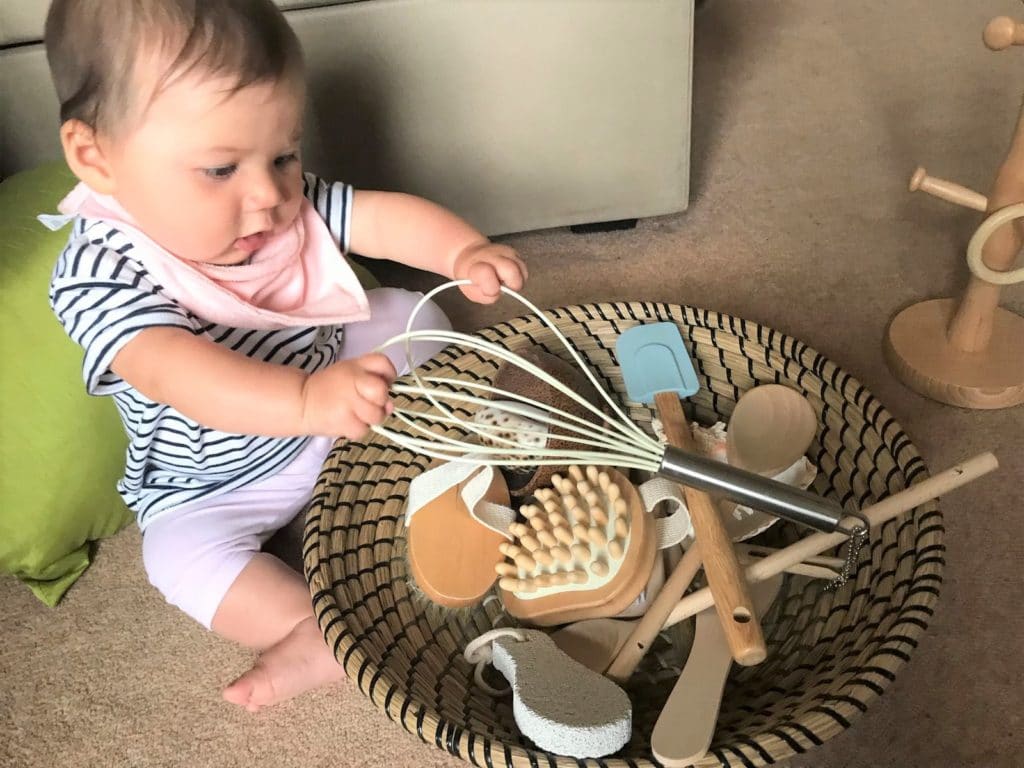
Fill a small basket with a few safe, interesting items from around the home. Good options include:
- A large wooden spoon
- A soft hairbrush
- A baby-safe mirror
- A silicone spatula
- A piece of natural sponge
- A knitted sock or soft scarf
Sit nearby while your toddler explores each object. You’ll be surprised how deeply they focus!
Why it matters:
This simple Montessori-inspired activity builds independence, focus, and sensory awareness. It also teaches your baby to explore materials on their own, encouraging early decision-making and concentration.
Tip: Change items every few days to maintain interest.
4.Bubble Play
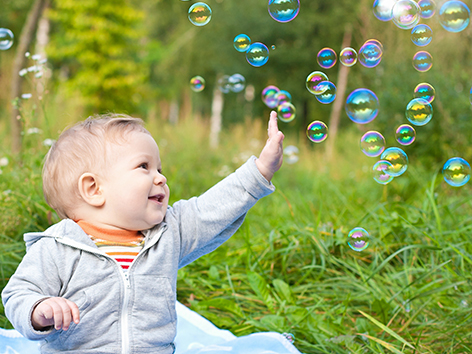
Bubbles bring pure joy! Blow bubbles in front of your baby and let them watch, reach, or pop them. You can even make baby-safe bubbles at home with water and a gentle baby wash.
Try playing outside where the light catches the bubbles beautifully, or near a window indoors.
Why it matters:
Bubble play is a fantastic way to support visual tracking, hand-eye coordination, and gross motor movement as your baby reaches, crawls, or toddles toward the floating spheres. Plus, it’s a beautiful way to share laughter together.
5.Stacking and Nesting Toys
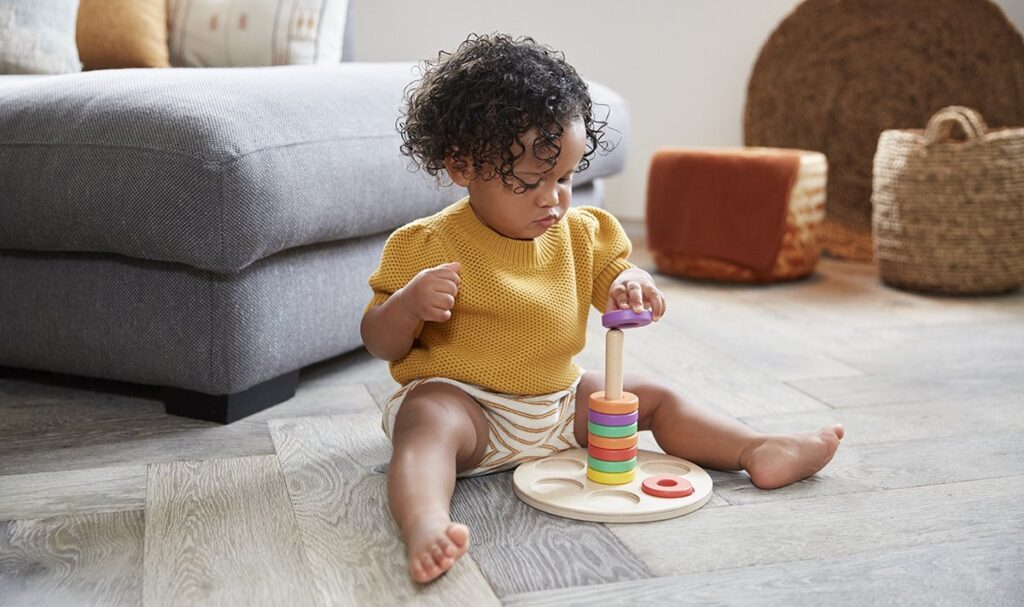
Offer simple stacking blocks, soft cups, or rings that your baby can stack or fit into each other. At first, they’ll knock them over more than build them—but that’s part of the learning.
You can join in by modeling how to stack or nest, encouraging imitation and problem-solving.
Why it matters:
These toys help develop spatial awareness, balance, and problem-solving skills. They also strengthen the small muscles in your baby’s hands and fingers, which are essential for self-feeding and future writing.
6.Water Play Time
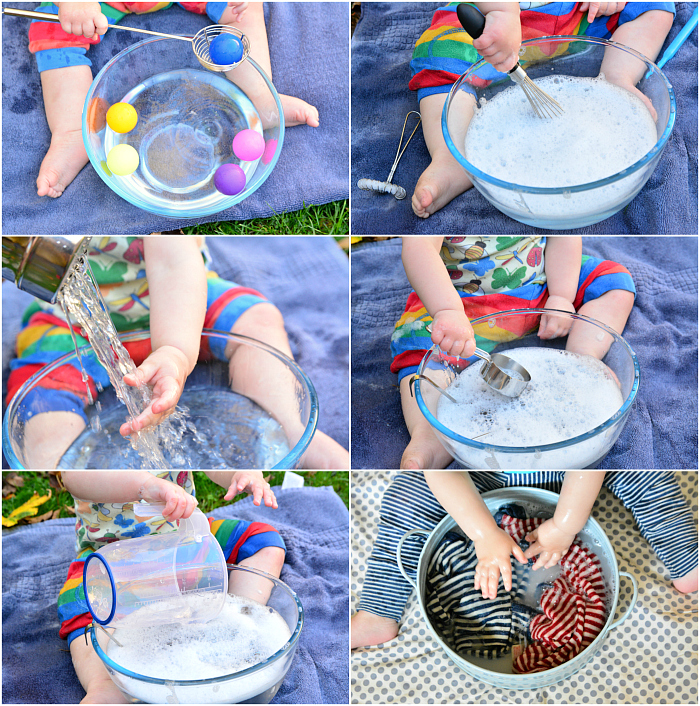
Set up a shallow bowl or tub with a small amount of lukewarm water. Add a sponge, soft cup, floating toys, or even citrus slices (for a sensory treat!). Spread a towel underneath to catch spills.
Let your baby splash, pour, and feel the water flow.
Why it matters:
Water play is soothing, stimulating, and strengthens coordination and focus. It also supports sensory integration, especially for touch and temperature.
Tip: Always supervise closely and keep water shallow (1–2 inches max).
7.Musical Moments

Introduce simple, baby-safe instruments like maracas, a drum, or a wooden xylophone. Or let your baby tap wooden spoons on an overturned bowl.
Put on gentle background music—instrumental lullabies or nature sounds—and let your baby explore rhythm.
Why it matters:
Music supports language development, auditory processing, and emotional regulation. Making music also encourages self-expression and builds early pattern recognition.
Bonus tip: Sing to your baby while playing—it strengthens your emotional bond and brings comfort.
8.Nature Walks & Outdoor Exploration

Take your baby outside for a slow walk or sit on a mat under a tree. Let them feel the grass, touch a leaf, or watch birds and clouds. Even a few minutes outside can work wonders.
Why it matters:
Nature nurtures calmness, curiosity, and mindfulness. Exposure to natural light helps regulate sleep patterns, and time outdoors is linked to better cognitive development and mood in young children.
Tip: Talk about what you see, hear, and feel. “Look at the green leaves,” or “Can you hear the bird singing?”
9.Baby-Friendly Art Time
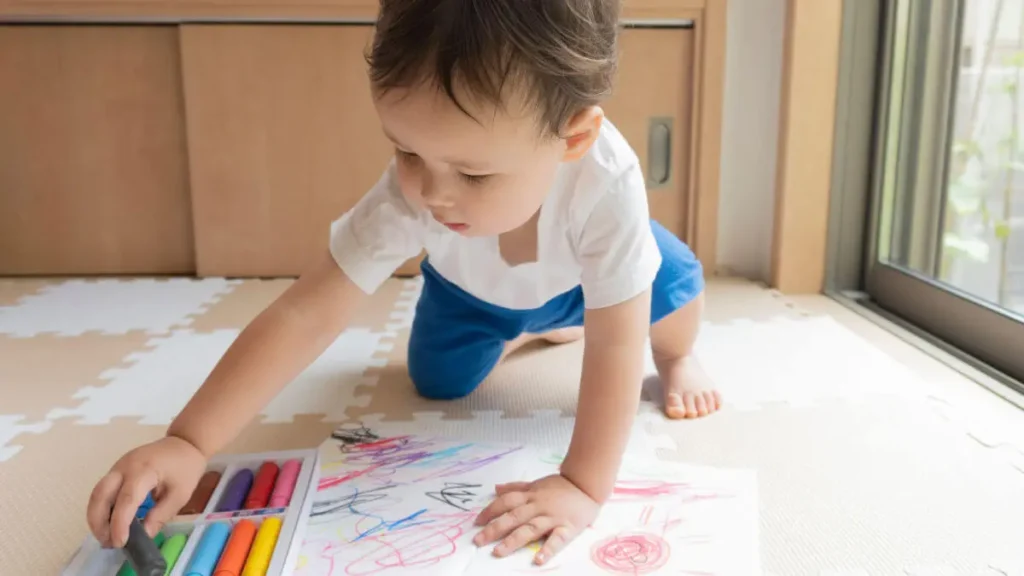
Try introducing art in the gentlest ways:
- Let them scribble with jumbo crayons on a large paper roll
- Use edible finger paint (made with yogurt and food coloring)
- Press hands or soft toys into a paint-covered sponge and stamp onto paper
Keep the experience open-ended and exploratory.
Why it matters:
Art activities promote creativity, self-expression, and early fine motor development. They also build confidence as babies see that they can make marks and colors appear!
Tip: Protect surfaces and clothes with a messy mat or apron. Focus on the process, not the outcome.
10.Daily Reading Time
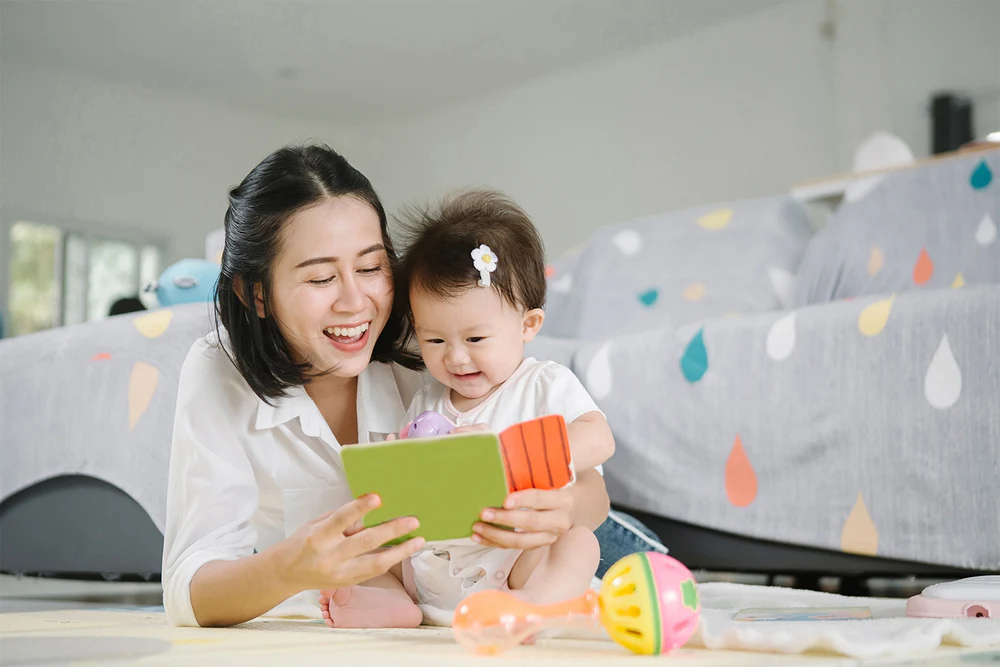
Choose sturdy board books with simple images, textures, or flaps. Sit together and let your baby turn the pages or point to objects while you read slowly.
Make reading part of your bedtime or morning routine.
Why it matters:
Reading aloud boosts language development, listening skills, and bonding. It also creates a quiet moment of connection and supports your child’s love for books as they grow.
Bonus tip: Repetition is great! Babies love hearing the same story again and again.
Final Thoughts from PeacePebble
Your 1-year-old is learning so much through simple, playful moments. These early activities don’t need to be fancy or complicated—what matters most is being present, following their lead, and sharing joy together.
In the world of parenting, peaceful play can be a powerful foundation for growth.
Stay connected with more mindful parenting tips, baby care ideas, and gentle activities by exploring our blog or joining the PeacePebble newsletter.

